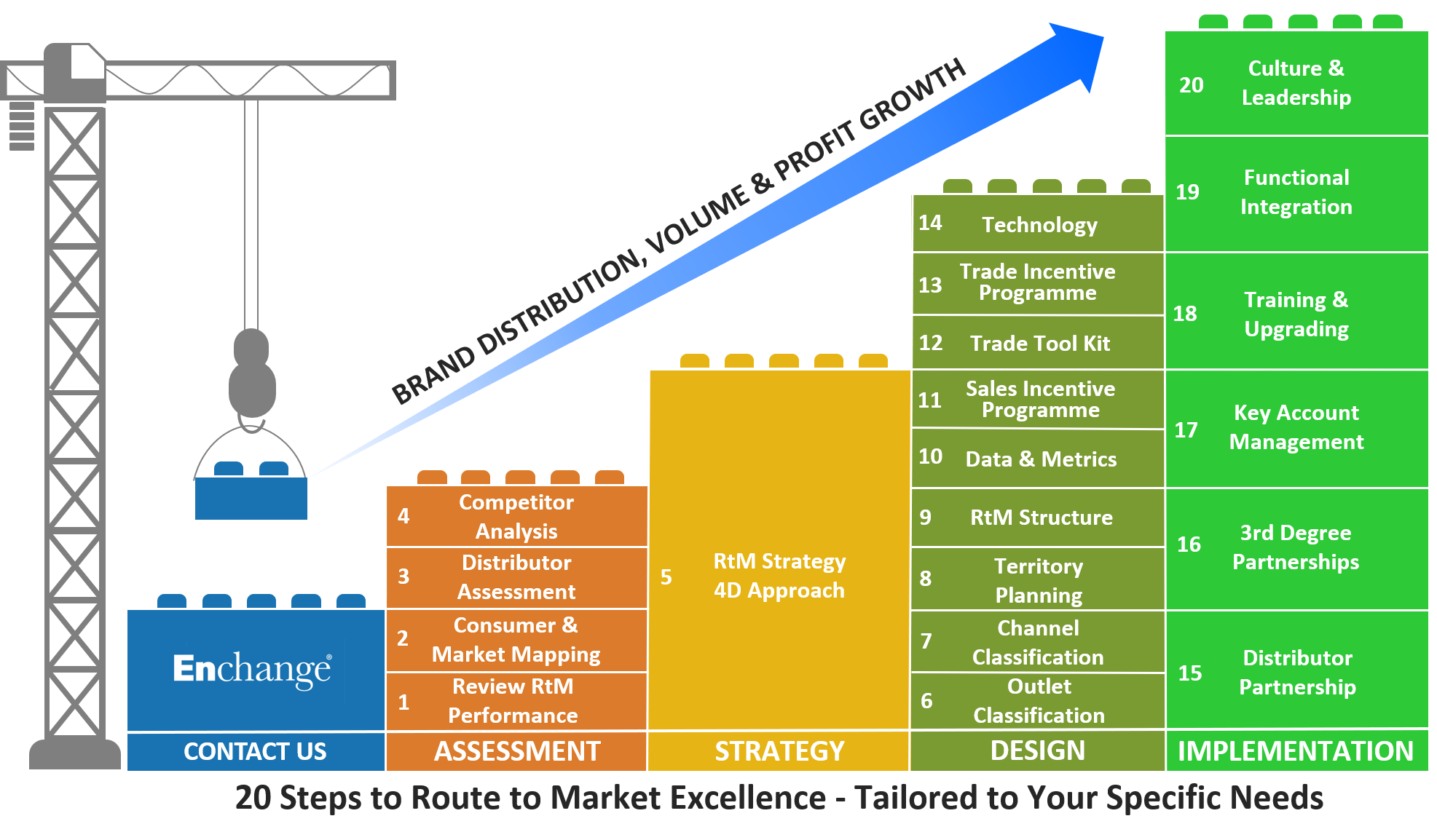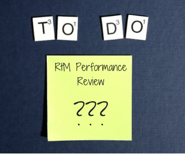Recently I shared my methodology for the 20 Steps to Route to Market Excellence at the beginning of this blog series. You can read more about it here: The FMCG Leaders Guide to Route to Market Strategy & Execution in 20 Steps. The first step, ‘Review Route to Market Performance’ sits in the ‘Assessment’ phase of this model. This is where we will begin our journey, and I would like to start with sharing a lesson I learnt from my own career.

When I joined I was 21 years of age and I was very keen to please my boss and look to get promoted. Once I figured out the geography of my territory, where each customer was located, I found out that I was finishing my 15 calls earlier and earlier each day. In terms of numbers, I was overachieving on my sales volume, my brand distribution, and my new product introduction targets. But by the end of month 3, I could do my required calls by lunchtime, most days, and still overachieve on my targets. Nice if you want an easy life, or great if you want to use the extra time to impress the boss, but overall, not a very well set up RtM. From the outside, everything looked like a well-oiled machine, but the devil was in the detail. This is where the 20 Step model comes in.
 The first phase is Assessment, and Step 1 is Review RtM Performance. In reviewing your current RtM performance, you need to look at all the 20 steps that are currently present within your RtM and get into the details to understand your current performance.
The first phase is Assessment, and Step 1 is Review RtM Performance. In reviewing your current RtM performance, you need to look at all the 20 steps that are currently present within your RtM and get into the details to understand your current performance.
Here are some examples of questions you can ask under Step 1 – Review RtM Performance:
Market & Data Analysis- What data is available on your RtM performance? What’s being measured? Do we have an effective RtM scorecard with the relevant KPIs? Is it enough?
- What does a detailed analysis of my ERP & RtM data reveal?
- Does available market data allow us to understand market realities and consumer buying trends, and what does this mean for our RtM?
- Following an analysis of baseline market data, including, for example, total market size, company shares, breakdown of channels, segments, price, pack format, etc. What does this show?
- What is the performance of current and available distributor partners?
- Is data and market intelligence openly shared between customers and ourselves?
In Field Analysis
- What is really going on in the marketplace and when did we last conduct systematic trade visits?
- What are the current levels of brand distribution and product display in retail? How do our internal reports compare to the actual reality in customer/retail outlets when we visit?
- Is there a living outlet database, regularly updated, which covers the market and splits the outlets by channel, and this matches our channel definitions?
- Do we use planograms for our displays? Are they evident and being adhered to? Do our competitors use them?
- What are the current levels of product understanding and brand dialogue within the trade?
- Are we leveraging digital effectively?
Portfolio & Pricing
- Do we have an up-to-date brand portfolio analysis covering all our brands and SKU’s? Does this include the competitor's brands? Has this information been fed into our RtM strategy in the past?
- Does our portfolio analysis cover pricing? What is our current pricing strategy?
- Do we have a price board showing our entire portfolio and what price segments our brands and SKU’s fit into? Do we have brands in all price segments, for example, Low, Mid Price, Premium and Super Premium? Do we also have all of this information for the competition's portfolio? How does this impact our RtM Strategy?
- How is pricing execution currently managed in the marketplace?
RtM Operations
- How are the territories set up and how have they performed over the last number of years?
- Do we have effective route planning, that is routinely refreshed?
- What are the current call frequencies? Are call frequency aligned to sales, operational and strategic goals?
- What are the current outlet and channel classifications? How have they been determined, and do they need to be reviewed?
- Are the RtM Team focused on new customers and increased Distribution?
- How are the key accounts being managed? How are we generally engaging with the trade?
Toolkits
- Is the RtM Team is equipped and trained for outlet execution and activation, including order capture, order method, POS material placement and management, planograms, portfolio and pricing process and initiatives, trade incentives and promotions, trade engagement options, etc.?
- Are the clear rules in place explaining the correct use, and recording of, POS Toolkit and other sales aids provided, including sales asset placement?
Training & People
- Does the RtM Team have a suitable structure, organisation, time, and equipment to cover the entire universe allocated to them?
- Is Sales Force staff turnover a major concern?
- What is the current sales incentive program and what has it delivered?
- What are the levels of training now? Do we train on the ‘steps of the call’?
- What are the links to other functions across the organisation? How well are they working?
- How are we capturing and learning from success to ensure Continuous Improvement?
This step is detailed, it requires extensive experience and the right tools to ensure all the current performance is laid bare. The more you do this, the more experience you have in FMCG operational execution, the more you will be able to interpret the details to reveal the true picture. This will also uncover if there are underutilised resources allowing people to finish by lunchtime!
I hope you find this helpful, and I appreciate your views and comments below. I will be continuing my series on the 20 Steps to Route to Market Excellence, I will be discussing step 2 in my next post.
What should you do now?
- Subscribe to my Newsletter on Route to Market Excellence.
- If you need specific help on any RtM issue, please reach out to me
- Use our 20 Steps to Route to Market Excellence model to guide you on your RtM journey.
- As we always say at Enchange, NOW is the time to be reviewing, building, and/or transforming your RtM Strategy and Execution to reap the rewards. Do not wait. Feel free to use our 20 Steps to Route to Market Excellence Implementation Guide to help you.







